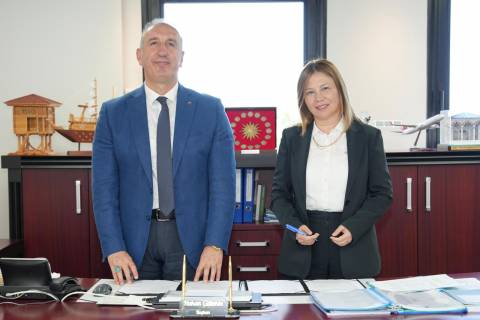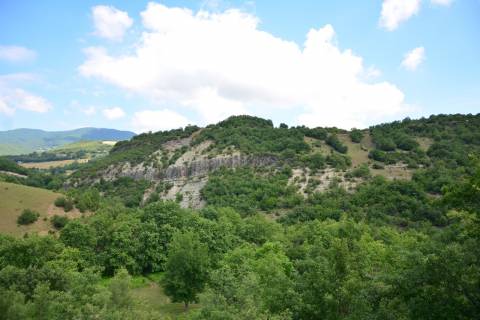TÜBİTAK-Backed Artificial Pasture Project Enhances Feed Efficiency in Livestock Farming
Ondokuz Mayıs University (OMU) Rector Prof. Dr. Fatma Aydın visited the artificial pasture project site conducted in collaboration with the Black Sea Agricultural Research Institute and supported by TÜBİTAK, to observe ongoing work and developments.
Joining the visit were Vice Rectors Prof. Dr. Alper Kesten and Prof. Dr. Ayşe Pınar Sümer, OMU Secretary General Prof. Dr. Erhan Burak Pancar, Director of the Black Sea Agricultural Research Institute Assoc. Prof. Dr. Betül Bayraklı, Prof. Dr. İlknur Ayan, Prof. Dr. Zeki Acar, Dr. Mehmet Can, Dr. Necla Çankaya, Dr. Fatih Alay, Dr. Hüseyin Meral, Agricultural Engineers Muhammet Şahin, Elif Şahin, and Ali Ayhan.
A Strategically Important Project for Feed Production in Livestock Farming
Rector Aydın was briefed by researchers on the studies conducted in the field and emphasized the strategic importance of the project in terms of feed production in livestock farming. The presentation highlighted that artificial pastures aim to introduce a more productive and sustainable model for animal feeding.
4–5 Times Higher Forage Yield
Under the TÜBİTAK-supported project No. 122O241, titled "Determination of the Botanical and Phytochemical Diversity, Forage Yield, Soil Characteristics, Live Weight Gain, and Anthelmintic Effects in Lambs in Artificial Pastures," artificial pastures have been established in collaboration between OMU and the Black Sea Agricultural Research Institute. These pastures yield 4 to 5 times more forage than natural grasslands.
A Valuable Alternative for Reducing Costs and Supporting Producers
Project officials noted that feed costs comprise 70–75% of the total costs in livestock farming. The inability to produce enough quality, abundant, and affordable feed directly affects milk and meat prices. In this context, the newly developed artificial pastures, consisting of plant mixtures suited to regional conditions, provide a valuable alternative to meet feed needs and offer economic benefits to producers.
1 Ton of Live Weight and 500 Kilograms of Carcass Meat Achieved
The project began in November 2022, and by April 2023, a rotational grazing system was implemented. According to data collected in the first year, appropriate plant mixtures enabled the production of 1 ton of live weight and 500 kilograms of carcass meat per hectare over approximately 90 days of grazing.
Supports Both Efficient Livestock Breeding and Reduced Chemical Use
It was also emphasized that including plant species with compounds beneficial to animal health in pasture mixtures supports more efficient livestock breeding while reducing the use of chemicals. This contributes positively to both environmental and public health.
Higher Returns Than Major Crops in the Region
According to evaluations conducted within the project, artificial pastures can be used economically for 4–5 years with proper management planning. It was determined that the income generated during this period exceeds that of the primary agricultural products cultivated in the region.


















